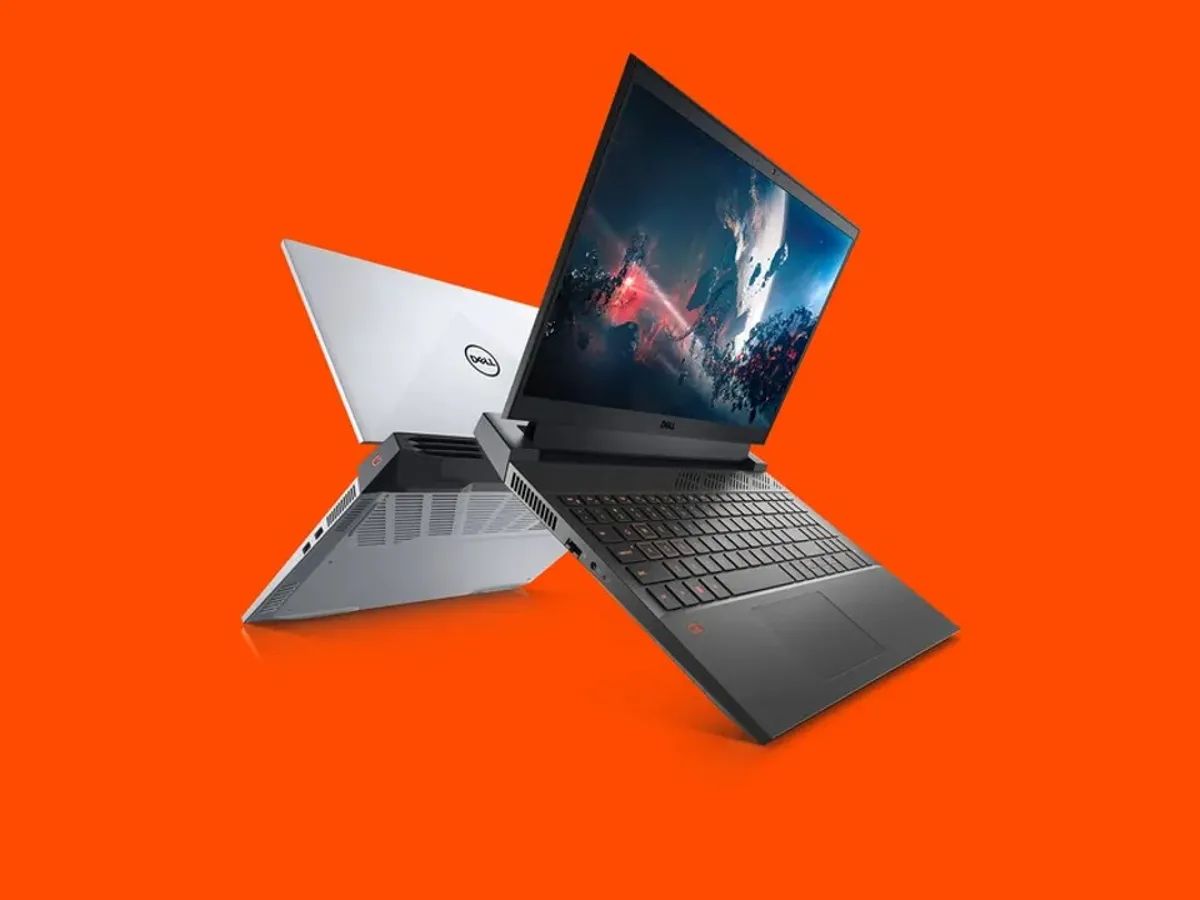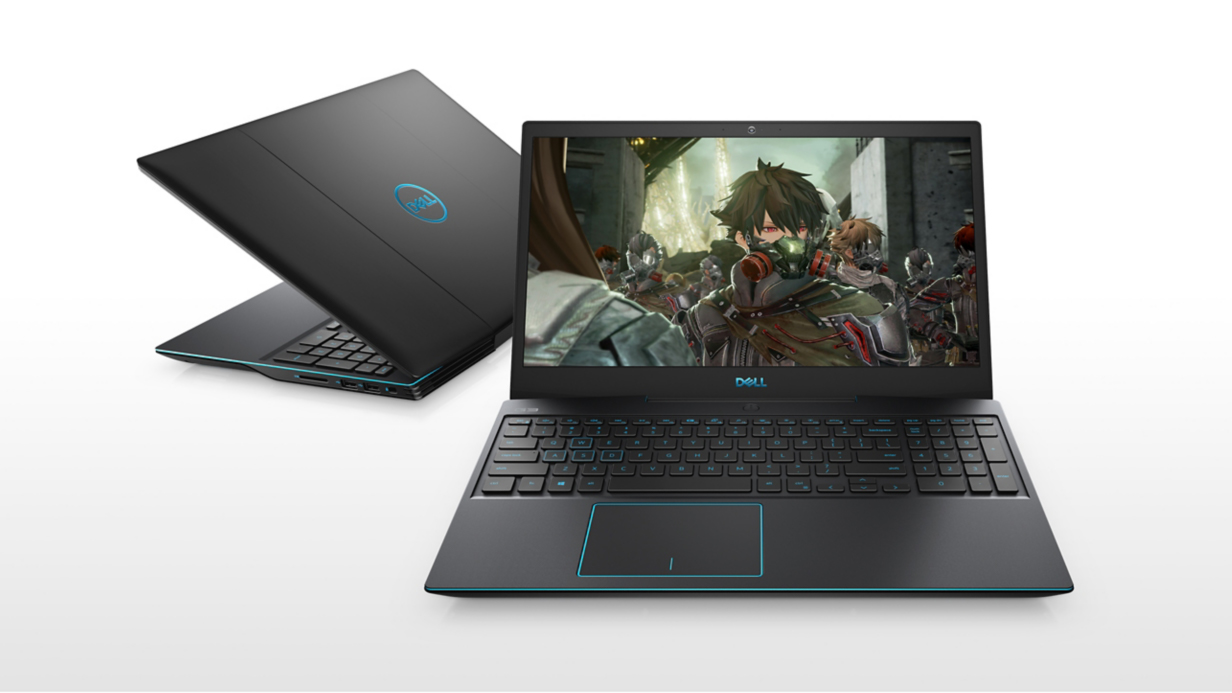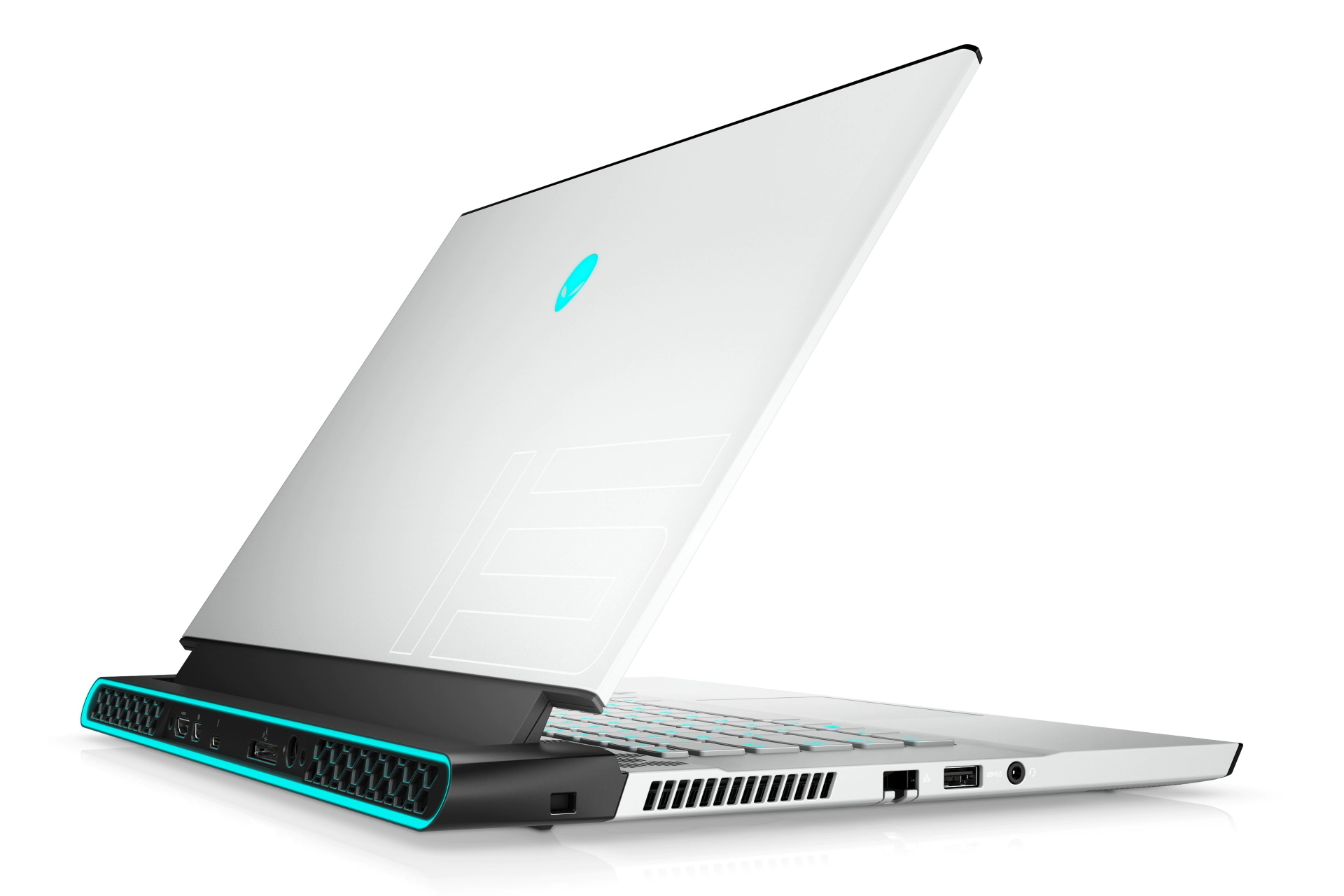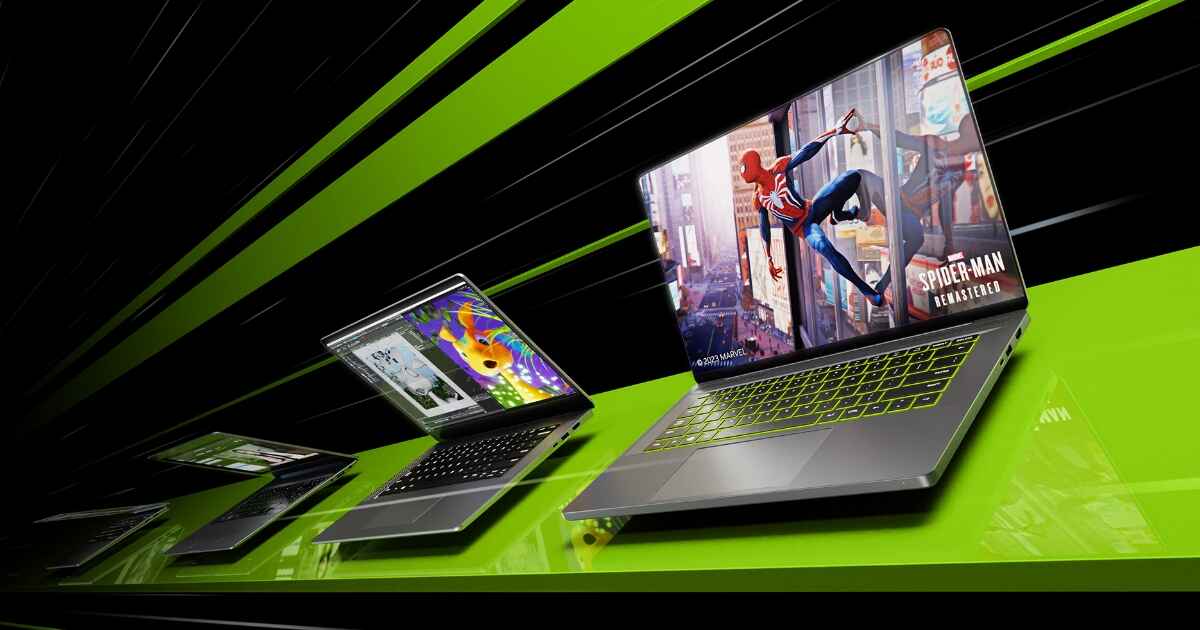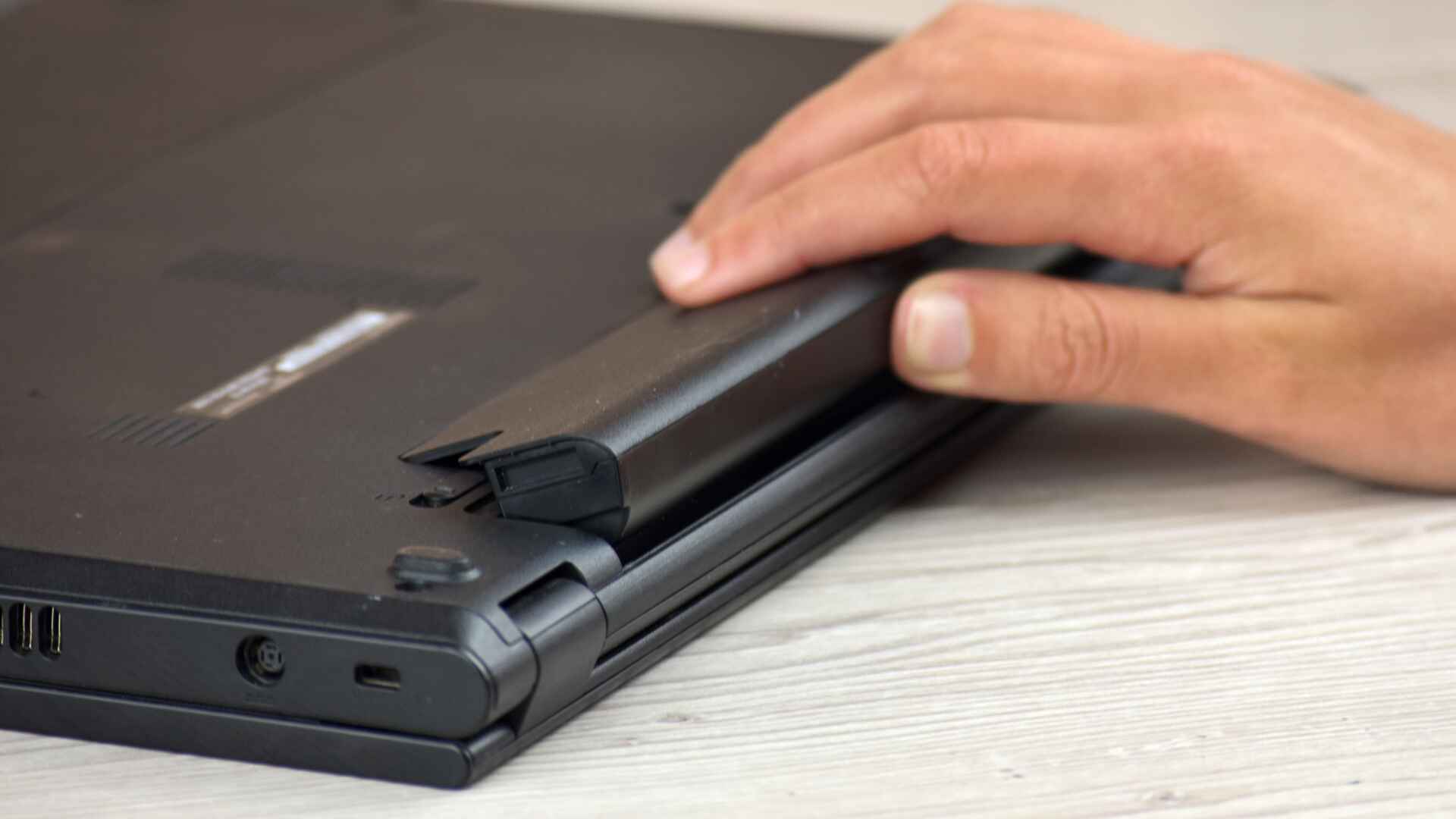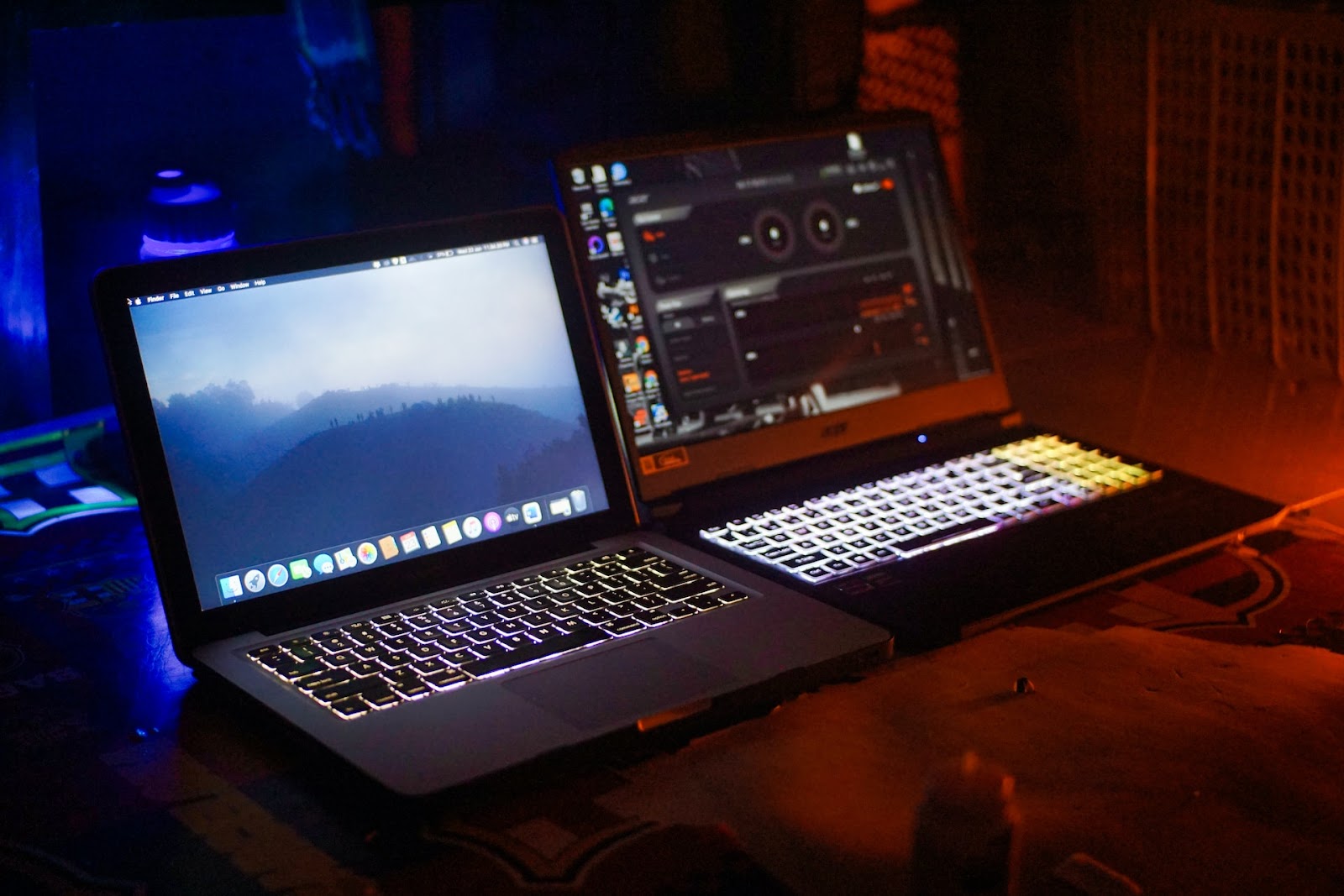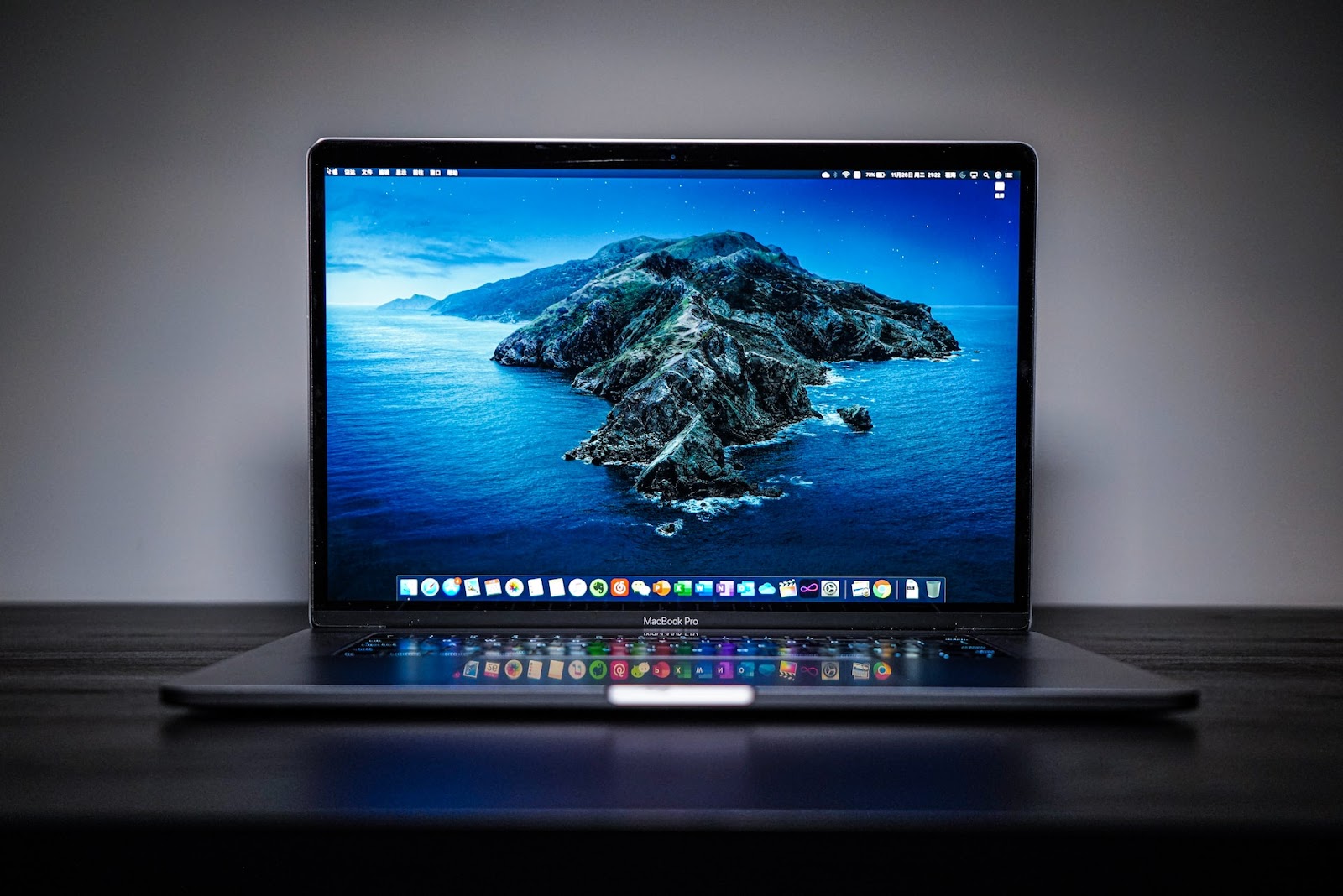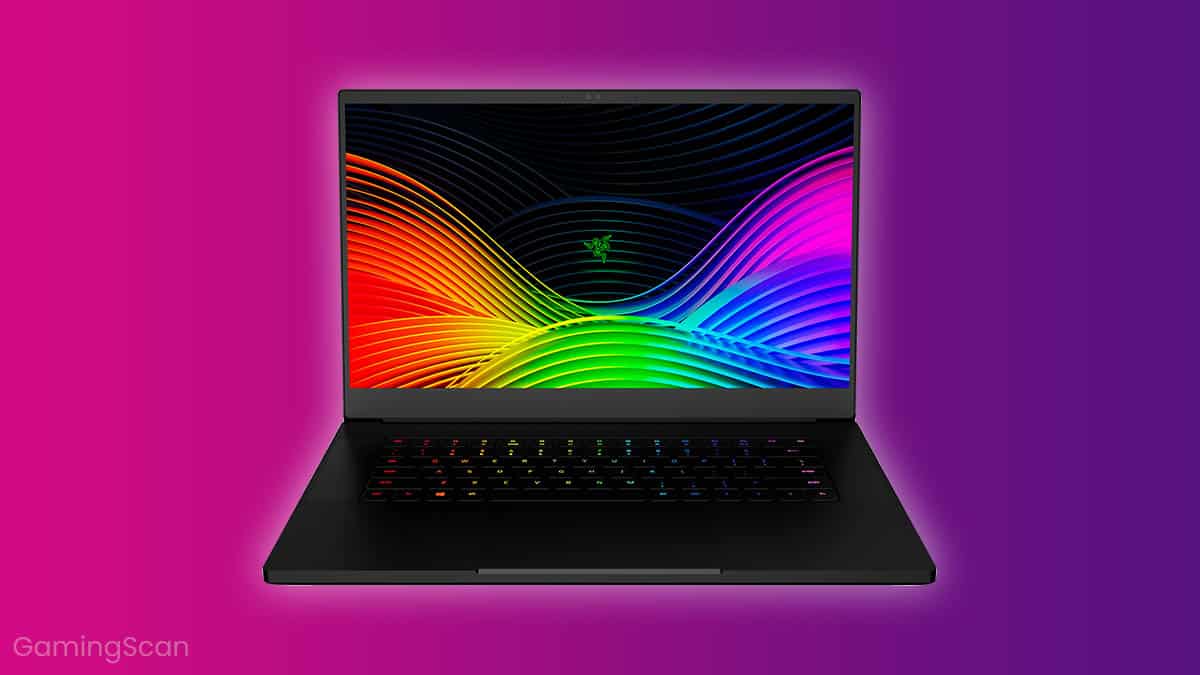Why Battery Life Matters on a Gaming Laptop
When it comes to gaming laptops, one of the most crucial factors to consider is battery life. Unlike regular laptops primarily used for everyday tasks, gaming laptops are designed to handle intense graphics and demanding gameplay. As a result, they tend to consume more power, leading to shorter battery life.
Having a longer battery life on your gaming laptop can provide several benefits. Firstly, it allows for extended gaming sessions without the need to constantly connect to a power source. This is especially important for gamers who frequently participate in tournaments or events where power outlets may not be readily available.
Moreover, a longer battery life on your gaming laptop ensures uninterrupted gameplay. Sudden power outages or loss of charging capability can result in lost progress or the inability to save your game. By maximizing your laptop’s battery life, you can minimize the risk of such disruptions.
Additionally, a gaming laptop with a longer battery life offers increased portability. Whether you’re using your laptop for gaming on the go or simply moving it from one room to another, not having to constantly worry about finding a power outlet can be a huge convenience.
Lastly, battery life is also closely tied to the overall lifespan of your gaming laptop. Frequent charging and discharging, along with extended periods of low battery levels, can lead to wear and tear on the battery, reducing its capacity over time. By effectively managing and extending your laptop’s battery life, you can potentially extend the longevity and performance of your device.
Given these reasons, it’s clear why battery life is a crucial aspect to consider when purchasing and using a gaming laptop. In the next section, we will delve into some useful tips and techniques to help you extend the battery life of your gaming laptop.
Tips for Extending Battery Life on a Gaming Laptop
If you want to get the most out of your gaming laptop’s battery life, here are some helpful tips to follow:
- Optimize Power Settings: Adjust your laptop’s power settings to prioritize battery life over performance. You can do this by accessing the power options in the Control Panel or Settings menu. Look for power plans such as “Power Saver” or create a custom power plan with lower processor speed and screen brightness settings.
- Reduce Screen Brightness: The screen is one of the biggest power consumers. Lowering the brightness level can significantly extend battery life. Additionally, consider using a dark or black background to further conserve power.
- Disable Unnecessary Background Processes: Close any background programs or applications that you’re not using during gaming sessions. These processes consume system resources and drain battery life.
- Disconnect External Devices: USB devices, external hard drives, or peripherals connected to your gaming laptop draw power from the battery. Disconnect or remove them when not in use to conserve battery life.
- Use Battery-saving Modes: Most gaming laptops come with battery-saving modes or profiles that can be activated. These modes adjust system settings and limit power consumption to prolong battery life. Activate these modes when gaming on battery.
- Monitor and Manage CPU Usage: Keep an eye on your laptop’s CPU usage during gameplay. Some games may max out the CPU, resulting in faster battery drain. Adjust the game settings, frame rate, or use CPU management software to optimize power usage.
- Utilize Power-Saving Browser Extensions: If you enjoy browser-based gaming, there are power-saving extensions available for popular browsers. These extensions help reduce CPU and GPU usage, leading to improved battery life while gaming online.
- Manage Game Settings: Adjusting in-game graphics settings can have a significant impact on battery life. Lower the resolution, decrease graphical effects, and disable unnecessary features to reduce the strain on your laptop’s hardware and battery.
- Keep Your Laptop Cool: Overheating not only affects performance but can also reduce battery life. Ensure proper ventilation and use cooling pads or fans to maintain optimal temperatures during gaming sessions.
- Clean Up and Organize Your Files: Regularly clean up your gaming laptop by removing unnecessary files and organizing your storage. This helps improve system performance and reduces the strain on the battery.
By implementing these tips, you can optimize the battery life of your gaming laptop, ensuring longer gaming sessions without interruptions. Let’s now move on to the section providing a brief summary of the key points discussed.
Optimize Power Settings
Optimizing the power settings on your gaming laptop is an essential step to maximize battery life. By adjusting the power settings, you can strike a balance between performance and battery efficiency. Here are some tips to help you optimize power settings:
A. Choose the Right Power Plan: Windows laptops offer different power plans, such as “Power Saver,” “Balanced,” and “High Performance.” Selecting the “Power Saver” plan can significantly extend battery life, albeit with a slight decrease in performance. Alternatively, you can create a custom power plan that suits your specific requirements.
B. Adjust Processor Power Management: Access the advanced power settings and navigate to the “Processor Power Management” section. Here, you can modify settings like minimum and maximum processor state. Lowering the maximum processor state can reduce power consumption during idle periods.
C. Reduce Screen Brightness: The brightness of your laptop screen greatly impacts battery life. Lower the brightness level to an optimal setting that is comfortable for you, without straining your eyes. Additionally, consider enabling the adaptive brightness feature, which automatically adjusts screen brightness based on ambient light conditions.
D. Manage Display and Sleep Timer: Set shorter display and sleep timers to minimize battery usage. Configure your laptop to turn off the display or enter sleep mode after a certain period of inactivity. Be sure to strike a balance between conserving battery and avoiding frequent interruptions during gameplay.
E. Disable Unnecessary Startup Programs: Many programs and applications set themselves to automatically launch during startup, consuming valuable system resources and draining battery life. Disable or remove unnecessary startup programs to optimize power usage.
F. Enable Battery Saver Mode: Most gaming laptops have a built-in battery saver mode that automatically adjusts various settings to maximize battery life. Enable this mode whenever you’re gaming on battery power to optimize power consumption.
G. Upgrade Drivers and Firmware: Outdated drivers and firmware can impact power efficiency. Regularly check for updates from your laptop manufacturer’s website and install the latest versions to ensure optimal performance and battery life.
By implementing these power-saving measures, you can significantly extend the battery life of your gaming laptop. It’s crucial to find the right balance between power settings and gaming performance to achieve the best possible gaming experience on battery power.
Reduce Screen Brightness
One of the most effective ways to extend the battery life of your gaming laptop is by reducing the screen brightness. The display consumes a significant amount of power, and lowering the brightness can make a noticeable difference in battery performance. Here are some tips to help you reduce screen brightness and conserve battery life:
A. Manual Brightness Adjustment: Most laptops have dedicated function keys that allow you to manually adjust the screen brightness. Look for the brightness symbols on your keyboard (usually represented by a sun or lightbulb icon) and use the corresponding function key to decrease the brightness. Experiment with different brightness levels to find a balance between visibility and battery efficiency.
B. Use Adaptive Brightness: Many gaming laptops come equipped with adaptive brightness technology that automatically adjusts the screen brightness based on ambient light conditions. Enable this feature in the display settings of your operating system to have the brightness level adapt to the environment. By letting the laptop adjust brightness as needed, you can save battery power without compromising visibility.
C. Choose Dark Backgrounds: Dark backgrounds or themes can help save power on OLED and AMOLED displays, as these screen technologies only illuminate the pixels that produce color. In contrast, on LCD displays, dark backgrounds don’t have as significant an impact on power consumption, but they can still contribute to slight energy savings. Switch to dark or black wallpapers and themes to help reduce the overall power usage of your screen.
D. Adjust Screen Timeout: Set a shorter screen timeout period on your laptop. This ensures that the display turns off sooner when you’re inactive, reducing unnecessary power consumption. Find the screen timeout settings in the power options or display settings, and set a time that suits your preferences.
E. Disable Backlit Keyboards: If your gaming laptop has a backlit keyboard, consider turning off the backlighting or adjusting its intensity. Backlit keyboards use additional power, and disabling or dimming the backlight can help conserve battery life, especially during gaming sessions where the keyboard illumination may not be necessary.
F. Use External Displays Sparingly: If you usually connect your gaming laptop to an external monitor or TV, be mindful of the power consumption of these displays. External displays often require more power than the laptop’s built-in screen. Limit the use of external displays when you’re on battery power to preserve battery life.
G. Enable Power-saving Display Options: Some gaming laptops offer power-saving display options in their control panels or software utilities. These options can reduce image quality, refresh rate, or other parameters to save power. Experiment with these settings to find the right balance between power savings and visual performance.
By reducing the screen brightness and implementing these tips, you can significantly extend the battery life of your gaming laptop. Remember to find a brightness level that allows for comfortable gameplay while maximizing battery efficiency.
Disable Unnecessary Background Processes
Disabling unnecessary background processes is an effective way to conserve battery life on your gaming laptop. These processes run silently in the background, consuming system resources and draining your battery. By identifying and disabling them, you can optimize power usage and extend your gaming sessions. Here are some tips to help you disable unnecessary background processes:
A. Identify Resource-Intensive Programs: Open the Task Manager (Ctrl + Shift + Esc) and navigate to the “Processes” tab. Look for programs that consume significant CPU or memory resources. Examples include file-syncing services, media players, or utilities that you don’t immediately need during gaming. Right-click on these processes and select “End Task” to temporarily disable them.
B. Disable Startup Programs: Many applications automatically run in the background when you start your gaming laptop. These programs not only slow down your system but also drain battery life. Review the startup programs by accessing the Task Manager or the startup section in the settings of your operating system. Disable any programs that you don’t require during gaming sessions.
C. Manage Automatic Updates: Automatic updates for software, drivers, or operating systems can consume system resources and interrupt gaming sessions. Check your update settings and choose the option that allows you to install updates manually or when the laptop is plugged into a power source. This way, you have control over when updates occur, preventing unexpected interruptions during gameplay.
D. Disable Background Services: Some services continue to run in the background, even if you don’t actively use the associated application. These services can consume valuable system resources and impact battery life. Open the “Services” tab in the Task Manager and identify non-essential services. Right-click on them and select “Stop” to temporarily disable them.
E. Use a Clean Boot: If your gaming laptop has a significant number of background processes running, you may consider performing a clean boot. This starts your laptop with only essential services and drivers, minimizing the number of background processes. Instructions for performing a clean boot can be found in the support documentation provided by the laptop manufacturer or the operating system.
F. Optimize Antivirus Scans: Antivirus scans can be resource-intensive and can run in the background, affecting gaming performance and battery life. Configure your antivirus software to schedule scans during periods when you’re less likely to be gaming or disable automatic scans altogether. Perform manual scans during idle times or when the laptop is connected to a power source.
G. Use Task Scheduler: The Task Scheduler in your operating system allows you to automate tasks at specific times or events. Review your scheduled tasks and disable any that are unnecessary or run during your gaming sessions. This prevents resource-intensive tasks from running in the background and ensures optimal battery usage.
By disabling unnecessary background processes, you can free up system resources, reduce battery drain, and improve the overall performance of your gaming laptop. It’s important to strike a balance between disabling processes for power efficiency and maintaining the functionality you need during your gaming sessions.
Disconnect External Devices
Disconnecting unnecessary external devices can significantly extend the battery life of your gaming laptop. External devices draw power from your laptop’s battery, and by removing them when not in use, you can conserve energy and prolong your gaming sessions. Here are some tips to help you effectively manage and disconnect external devices:
A. Unplug USB Devices: USB devices such as flash drives, external hard drives, or peripherals like gaming controllers or printers, consume power even when they’re not actively in use. Disconnect any USB devices that you don’t need during your gaming sessions to reduce battery drain.
B. Remove Memory Cards: If you use memory cards with your gaming laptop, ensure that you remove them when you’re not actively accessing or transferring data. Memory cards, such as SD cards or microSD cards, can consume power while inserted, even if you’re not using them.
C. Eject Optical Discs: If you have an optical disc drive, ensure that there are no discs inserted when you’re not using them. Spinning discs consume power, and ejecting unused discs can help conserve battery life.
D. Disconnect External Monitors: If you’re not actively using an external monitor or projector, disconnect them from your gaming laptop. External displays require additional power to function, and by removing them, you can optimize power usage and extend battery life.
E. Turn Off Bluetooth: Bluetooth devices like wireless headsets, speakers or mice, can consume power even if they’re not actively paired with your gaming laptop. Turn off Bluetooth when you’re not using these devices to minimize battery drain.
F. Disable Wi-Fi or Ethernet: If you’re gaming offline or not using internet-connected features, consider disabling Wi-Fi or disconnecting the Ethernet cable. While connected, these networking devices continuously consume power, which can be saved by turning them off or disconnecting them when not needed.
G. Use External Power Sources: If you need to charge other devices, such as smartphones or tablets, avoid using your gaming laptop as the charging source. Instead, connect these devices to a separate power outlet or use a dedicated charging station. By doing so, you can prevent the unnecessary drain on your laptop’s battery.
By disconnecting external devices when they’re not in use, you can minimize power consumption and maximize the battery life of your gaming laptop. Always assess which devices are necessary for your gaming sessions and remove any that are not actively contributing to your gaming experience.
Use Battery-Saving Modes
To optimize battery usage on your gaming laptop, take advantage of the built-in battery-saving modes or profiles. These modes are specifically designed to reduce power consumption and extend battery life. Here are some tips on using battery-saving modes effectively:
A. Default Power Plans: Most gaming laptops come with pre-configured power plans, such as “Power Saver,” “Balanced,” or “High Performance.” The “Power Saver” mode prioritizes energy efficiency over performance, making it an ideal choice for longer gaming sessions on battery power. The “Balanced” mode strikes a balance between performance and power usage.
B. Custom Power Plans: Explore the power settings in your gaming laptop’s control panel or settings menu to customize a power plan that suits your specific needs. You can adjust settings like processor speed, screen brightness, and sleep modes to optimize power usage based on your gaming preferences.
C. Battery Saver Mode: Take advantage of the dedicated battery saver mode available on many gaming laptops. Enabling this mode can automatically modify power settings to reduce resource usage. It typically adjusts CPU performance, limits background activities, and adjusts screen brightness to prolong battery life.
D. Adaptive Brightness: Enable the adaptive brightness feature in your display settings. This technology adjusts the screen brightness based on the ambient light conditions, ensuring optimal visibility while conserving battery power. It automatically reduces brightness in darker environments and increases it in well-lit situations.
E. Configure Power Plan Settings: Dig into the advanced settings of your power plan to modify specific parameters. You can adjust settings like the time until the display turns off, the hard disk inactivity timeout, or when the laptop enters sleep mode. Customizing these settings helps optimize power usage based on your gaming habits.
F. Activate Power-saving Graphics: Some gaming laptops offer the option to switch to integrated graphics during battery power to save energy. This feature allows the laptop to use the graphics power of the integrated GPU instead of the dedicated graphics card, reducing power consumption during less demanding gaming sessions.
G. Utilize Battery Optimization Software: Explore third-party software specifically designed for battery optimization. These programs can analyze system resources, detect power-hungry processes, and provide recommendations for maximizing battery life. They may offer additional features like customizable power profiles or automated power-saving settings.
By utilizing battery-saving modes and customizing power settings, you can ensure that your gaming laptop operates at maximum efficiency while minimizing power consumption. Remember to choose the power plan that best suits your gaming needs and adjust settings as required to strike the perfect balance between performance and battery life.
Monitor and Manage CPU Usage
Monitoring and managing CPU usage on your gaming laptop is crucial for maximizing battery life and optimizing performance. The CPU, or central processing unit, is at the heart of your laptop’s performance and power consumption. By effectively monitoring and managing CPU usage, you can extend battery life and ensure smooth gameplay. Here are some tips to help you monitor and manage CPU usage:
A. Task Manager: Open the Task Manager by pressing Ctrl + Shift + Esc or by right-clicking on the taskbar and selecting “Task Manager.” Navigate to the “Processes” tab to see a list of running processes and their CPU usage. Monitor which processes are taking the most CPU resources and identify any unnecessary or resource-intensive tasks that can be ended.
B. CPU Monitoring Software: Install and use CPU monitoring software to get a detailed view of CPU usage and temperature. Many third-party software programs offer real-time monitoring and reporting of CPU performance. These tools can help you identify heavy CPU usage and take necessary actions to manage it effectively.
C. Adjust Game Settings: Some games allow you to adjust graphics settings, including CPU-intensive features like anti-aliasing, shadows, and particle effects. Lowering these settings can reduce the strain on your CPU, resulting in lower power consumption and improved battery life.
D. Limit Background Processes: Close any unnecessary background processes or applications running alongside your game. These processes consume CPU resources and can drain battery life. Use the Task Manager to identify and disable any unnecessary background programs.
E. Consider CPU Management Software: Utilize specialized CPU management software that allows you to optimize CPU usage. These tools provide features such as regulating CPU speed, prioritizing specific processes, or allocating resources more efficiently. Experiment with different software to find the one that suits your needs and helps improve CPU performance while conserving battery life.
F. Monitor CPU Temperatures: High CPU temperatures can lead to increased power consumption and reduced battery life. Use temperature monitoring software to keep an eye on your CPU temperatures during gameplay. If your laptop tends to run hot, consider using laptop cooling pads or positioning the laptop in a well-ventilated area to prevent excessive heat buildup.
G. Update Drivers and Firmware: Outdated or incompatible drivers can result in increased CPU usage. Keep your gaming laptop up to date by regularly checking for driver updates from your laptop manufacturer’s website. Installing the latest drivers and firmware can optimize CPU performance and reduce unnecessary power consumption.
By monitoring and managing CPU usage on your gaming laptop, you can ensure that your CPU operates efficiently, resulting in improved battery life and smoother gameplay. Regularly monitor CPU usage, adjust game settings, and utilize software tools to optimize CPU performance and extend the battery life of your gaming laptop.
Utilize Power-Saving Browser Extensions
When gaming on your laptop, web browsers can be a significant source of power consumption, especially if you frequently play browser-based games or spend time browsing the internet. To enhance battery life while gaming, consider using power-saving browser extensions. These extensions help reduce CPU and GPU usage, ultimately leading to improved battery performance. Here are some tips for utilizing power-saving browser extensions:
A. Ad-blocking Extensions: Advertisements can be resource-intensive, consuming both CPU and GPU power. Ad-blocking extensions, such as uBlock Origin or AdBlock Plus, can significantly reduce the number of ads displayed on webpages, resulting in reduced power consumption and improved battery life.
B. Script-blocking Extensions: Javascript-heavy websites can put a strain on your CPU and GPU. Script-blocking extensions, like NoScript or ScriptSafe, allow you to control which scripts are executed on webpages, reducing unnecessary resource usage and optimizing power consumption.
C. Data Compression Extensions: Some browser extensions, such as Data Saver or Opera Turbo, compress data before it is sent from the server to your browser. This compression reduces the overall data transfer, resulting in lower bandwidth requirements, shorter page loading times, and reduced power consumption.
D. Performance Monitoring Extensions: Install browser extensions that provide performance monitoring and optimization features. These extensions, like The Great Suspender or OneTab, can help manage and suspend inactive or background tabs, reducing memory and CPU usage to improve overall browser performance and power efficiency.
E. Tab Management Extensions: Using multiple tabs simultaneously can strain your laptop’s resources. Tab management extensions, such as Tab Wrangler or Toby, help organize and manage your open tabs, suspending inactive ones to free up system resources and reduce power consumption.
F. Dark Mode Extensions: Dark mode or night mode browser extensions can reduce the brightness of webpages, resulting in less power consumption, particularly on devices with OLED or AMOLED screens. These extensions, like Dark Reader or Night Eye, invert colors or apply dark themes to websites, providing an energy-efficient browsing experience.
G. Power-Management Extensions: There are dedicated power-management extensions available for different browsers. These extensions offer various features to optimize power usage, such as adjusting video playback quality, throttling resource-intensive web content, or suspending background tabs. Explore and experiment with different power-management extensions to find the ones that best suit your browsing needs.
By utilizing power-saving browser extensions, you can optimize your web browsing experience while reducing power consumption. These extensions help minimize the strain on your laptop’s CPU and GPU, allowing for longer gaming sessions and improved battery life on your gaming laptop.
Manage Game Settings
Managing game settings is essential for optimizing battery life and ensuring a smoother gaming experience on your laptop. By adjusting in-game graphics and performance settings, you can reduce the load on your CPU and GPU, resulting in lower power consumption. Here are some tips for effectively managing game settings:
A. Graphics Settings: Most games offer a range of graphics options that allow you to customize the visual quality and performance. Consider lowering the resolution, disabling or reducing anti-aliasing, and lowering other graphics settings like shadows, textures, and particle effects to reduce strain on your GPU and conserve power.
B. Frame Rate Limit: Limiting the maximum frame rate can help reduce the workload on your CPU and GPU, resulting in lower power consumption. Adjust the frame rate limit to a reasonable value that still provides smooth gameplay but ensures optimal power efficiency.
C. V-Sync: Vertical sync, or V-Sync, synchronizes the game’s frame rate with the refresh rate of your laptop’s display. Enabling V-Sync can prevent screen tearing but may also increase the load on your GPU and drain battery life. Consider disabling V-Sync or experimenting with adaptive V-Sync options to balance performance and power consumption.
D. Background Applications: Close any unnecessary background applications or processes that may be running concurrently with your game. These applications consume system resources, contributing to increased CPU usage and power consumption. Use the Task Manager to identify and close any non-essential background processes.
E. Game-specific Settings: Some games have additional settings that allow you to optimize power usage. Look for options like “Battery Saver Mode” or “Power-Saving Mode” within the game settings. Enabling these options can adjust various parameters, such as reducing visual effects or lowering CPU and GPU usage, to improve battery life while gaming.
F. Update Game Patches and Drivers: Game developers often release patches or updates that address performance issues and optimize power usage. Regularly update your games to benefit from these improvements. Additionally, keeping your GPU drivers up to date ensures compatibility with the latest game optimizations and power-saving features.
G. Test and Adjust: Each game may have different performance requirements and power-saving options. Experiment with different settings and monitor the impact on performance and power consumption. Find the right balance where your game runs smoothly, while still maximizing battery life.
By effectively managing game settings, you can optimize power usage and enhance the overall gaming experience on your laptop. Carefully tailor graphics settings, adjust frame rates, and monitor background processes to strike the perfect balance between performance and power efficiency.
Keep Your Laptop Cool
Keeping your gaming laptop cool is important not only for maintaining optimal performance but also for extending battery life. Excessive heat can lead to increased power consumption and potential thermal throttling, negatively impacting both the overall gaming experience and battery efficiency. Here are some tips to help you keep your laptop cool:
A. Use a Laptop Cooling Pad: Laptop cooling pads help improve airflow and dissipate heat away from your laptop. These pads usually feature built-in fans or cooling elements to provide extra cooling during intense gaming sessions. Placing your laptop on a cooling pad can help keep temperatures in check and prevent overheating.
B. Clean the Vents and Fans: Over time, dust and debris can accumulate in the laptop’s vents and fans, obstructing airflow and causing temperatures to rise. Regularly clean these components using compressed air or a soft brush to remove any accumulated dust, allowing for better ventilation and improved cooling performance.
C. Elevate the Laptop: Elevating your gaming laptop using a laptop stand or even household items like books can help improve airflow underneath the laptop. This promotes better cooling by allowing air to circulate freely around the bottom of the laptop, preventing heat from getting trapped and building up.
D. Avoid Gaming on Soft Surfaces: When gaming on soft surfaces like beds or cushions, the laptop’s cooling system can become obstructed, leading to poor ventilation and increased temperatures. Opt for firm, flat surfaces like desks or cooling pads to ensure proper airflow and effective cooling.
E. Limit Background Applications: Running multiple resource-intensive applications or games simultaneously can increase CPU and GPU usage, generating more heat. Limit the number of background applications running and avoid multitasking excessively while gaming to reduce the strain on your laptop’s cooling system.
F. Adjust Power Settings: Modifying your laptop’s power settings can have an impact on heat generation. Set your power plan to prioritize power-saving options, such as reducing CPU speed, to minimize heat generation and improve battery life. Adjusting the power settings can also lower the cooling demands on your laptop.
G. Avoid Direct Sunlight: Exposing your gaming laptop to direct sunlight can heat up the device rapidly and cause the internal components to reach high temperatures. Whenever possible, keep your laptop away from direct sunlight and in a cool, shaded area to maintain optimal operating temperatures.
H. Monitor Temperatures: Install temperature-monitoring software to keep an eye on the internal temperature of your gaming laptop. Excessive heat can negatively impact performance and battery life. If you notice consistently high temperatures, take the necessary steps to improve cooling, such as cleaning the vents or using a laptop cooling pad.
By implementing these cooling strategies, you can maintain lower operating temperatures for your gaming laptop, thus prolonging its performance and battery life. Consistent cooling ensures that your gaming sessions are smooth, uninterrupted, and optimized for power efficiency.
Clean Up and Organize Your Files
Keeping your gaming laptop’s files clean and organized not only improves overall system performance but also contributes to better battery life. Cluttered files, unnecessary programs, and fragmented storage can lead to increased power consumption and reduced efficiency. Here are some tips for cleaning up and organizing your files:
A. Remove Unwanted Programs: Over time, you may accumulate unnecessary programs and applications on your gaming laptop. These programs not only take up storage space but can also run in the background, consuming system resources and draining battery life. Uninstall any programs that you no longer use or need to free up space and optimize power usage.
B. Delete Junk and Temporary Files: Regularly go through your files and delete any unnecessary junk or temporary files. These files can accumulate over time and take up valuable storage space. Use disk cleanup utilities or third-party software to easily identify and remove these unwanted files, freeing up storage and improving system performance.
C. Organize your Game Library: If you have a large collection of games on your laptop, consider organizing them into folders or libraries based on category, genre, or platform. Keeping your games organized not only makes it easier to find and launch them but also helps prevent unnecessary background processes and resource consumption.
D. Defragment Your Hard Drive: Regularly defragmenting your hard drive can improve file access and overall system performance. When files are fragmented, the hard drive takes longer to retrieve and load them, leading to increased power consumption. Use the built-in Windows Disk Defragmenter or third-party software to defragment your hard drive and optimize power usage.
E. Use Cloud Storage: Consider utilizing cloud storage services for storing files that you don’t need immediate access to. Storing files in the cloud helps free up local storage space, reducing power consumption and improving overall system performance. Ensure that you enable selective sync to only sync necessary files and folders to minimize data transfer and power usage.
F. Optimize Gaming Data: Some games generate large amounts of temporary or cache data, which can consume both storage space and power. Check the game options or settings to see if there are options to delete or clear temporary files, cache, or saved game data that you no longer need.
G. Regularly Update and Scan for Malware: Outdated software and malware can impact system performance and increase power consumption. Keep your operating system, antivirus software, and other programs up to date to ensure optimal performance and security. Regularly scan your system for malware and remove any threats that may be affecting performance and power efficiency.
H. Use Disk Cleanup Tools: Take advantage of built-in disk cleanup tools or third-party software to scan and clean up your gaming laptop’s storage. These tools help identify and remove unnecessary files, system caches, and other items that can contribute to increased power consumption and decreased battery life.
By cleaning up and organizing your files, you can improve both the performance and battery life of your gaming laptop. Removing unnecessary programs, deleting junk files, and optimizing storage can reduce power consumption and ensure smooth gaming experiences. Regular maintenance and file organization are key to a well-optimized and efficient gaming laptop.
Conclusion
Managing and extending the battery life of your gaming laptop is essential for uninterrupted gaming sessions and enhanced portability. By implementing the tips and strategies mentioned in this article, you can optimize power settings, reduce screen brightness, disable unnecessary background processes, disconnect external devices, use battery-saving modes, manage CPU usage, utilize power-saving browser extensions, manage game settings, keep your laptop cool, and clean up and organize your files.
Optimizing power settings ensures a balance between performance and battery efficiency. Reducing screen brightness and disabling unnecessary background processes minimize power consumption. Disconnecting external devices and utilizing battery-saving modes conserve battery life. Monitoring and managing CPU usage can enhance performance and power efficiency. Power-saving browser extensions reduce resource usage while browsing. Managing game settings optimizes power usage while gaming. Keeping your laptop cool prevents overheating and increases battery life. Cleaning up and organizing your files improves system performance and power efficiency.
By following these strategies, you can significantly extend the battery life of your gaming laptop, enabling longer gaming sessions, increased portability, and uninterrupted gameplay. Remember to create a seamless and enjoyable reading experience by incorporating natural language and a human-like flow into your writing.







